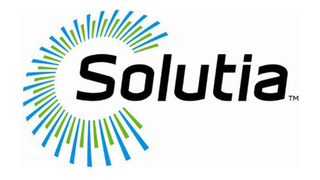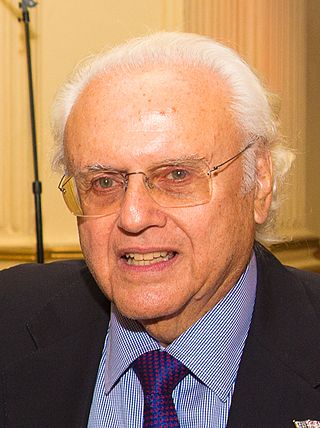Related Research Articles

Nitro is a city in Kanawha and Putnam counties in the U.S. state of West Virginia. It takes its name from a World War I era nitrocellulose plant. The population was 6,618 according to the 2020 census. It is part of the Charleston metropolitan area.
Times Beach is a ghost town in St. Louis County, Missouri, United States, 17 miles (27 km) southwest of St. Louis and 2 miles (3 km) east of Eureka. Once home to more than two thousand people, the town was completely evacuated early in 1983 due to TCDD contamination, formerly the largest civilian exposure to the compound in the history of the United States.

Solutia Inc. was an American manufacturer of materials and specialty chemicals including polyvinyl butyral (PVB), ethylene vinyl acetate (EVA), and thermoplastic polyurethane (TPU) interlayers for laminated glass, aftermarket window films, protective barrier and conductive films, and rubber processing chemicals. The company was formed on September 1, 1997, as a divestiture of the Monsanto Company chemical business. In July 2012, the company was acquired by Eastman Chemical Company.

Ira Leon Rennert is an American billionaire businessman, and the chairman and CEO of Renco Group.
Naugles was a Southern California fast-food Mexican restaurant chain that existed from 1970 to 1995. A revived Naugles chain was established in 2015 by entrepreneur Christian Ziebarth, after it was ruled that the trademarks had been abandoned by the original company's successor, Del Taco.

Olin Corporation is an American manufacturer of ammunition, chlorine, and sodium hydroxide. The company traces its roots to two companies, both founded in 1892: Franklin W. Olin's Equitable Powder Company and the Mathieson Alkali Works. Accidents at Olin chemical plants have exposed employees and nearby residents to health hazards.

FMC Corporation is an American chemical manufacturing company headquartered in Philadelphia, Pennsylvania, which originated as an insecticide producer in 1883 and later diversified into other industries. In 1941 at the beginning of US involvement in WWII, the company received a contract to design and build amphibious tracked landing vehicles for the United States Department of War, and afterwards the company continued to diversify its products. FMC employs 7,000 people worldwide, and had gross revenues of US$4.7 billion in 2018.
The United States Radium Corporation was a company, most notorious for its operations between the years 1917 to 1926 in Orange, New Jersey, in the United States that led to stronger worker protection laws. After initial success in developing a glow-in-the-dark radioactive paint, the company was subject to several lawsuits in the late 1920s in the wake of severe illnesses and deaths of workers who had ingested radioactive material. The workers had been told that the paint was harmless. During World War I and World War II, the company produced luminous watches and gauges for the United States Army for use by soldiers.
Diamond Alkali Company was an American chemical company incorporated in 1910 in West Virginia by a group of glass industry businessmen from Pittsburgh. The company soon established a large chemical plant at Fairport Harbor, Ohio, which would operate for over sixty years. In 1947, the headquarters of the company was moved from Pittsburgh to Cleveland. Later the company established a plant in Redwood City, California, that produced ion-exchange resins. In 1967, Diamond Alkali and Shamrock Oil and Gas merged to form the Diamond Shamrock Corporation. Diamond Shamrock would go on to merge with Ultramar Corporation, and the combined company, Ultramar Diamond Shamrock Corporation, would in turn be acquired by Valero Energy Corporation in 2001.

Republic Services, Inc. is a North American waste disposal company whose services include non-hazardous solid waste collection, waste transfer, waste disposal, recycling, and energy services. It is the second largest provider of waste disposal in the United States after Waste Management.
Imperial Oil is a current Superfund site located off Orchard Place near Route 79 in Morganville, Marlboro Township, Monmouth County, New Jersey. This site is one of 114 Superfund sites in New Jersey. It is in the U.S. Environmental Protection Agency (EPA) Region 2 Superfund area of control and organization. The 15-acre (61,000 m2) Imperial Oil Co./Champion Chemicals site consisted of six production, storage, and maintenance buildings and 56 above-ground storage tanks.

Pentafluoroethane is a fluorocarbon with the formula CF3CHF2. Pentafluoroethane is currently used as a refrigerant (known as R-125) and also used as a fire suppression agent in fire suppression systems.

West Lake Landfill is a closed, unlined mixed-waste landfill located in Bridgeton, Missouri. It was featured in the 2015 documentaries The First Secret City, The Safe Side of the Fence and the 2017 HBO documentary Atomic Homefront. Its contents have been shown to include radioactive waste; it is thus also an EPA Superfund cleanup site.
Pharma Medica Research Inc. is a Canadian research and development company that works with pharmaceutical companies and performs clinical trials in the pharmaceutical and biotechnology industry. The company is based near Toronto, Canada with headquarters in Mississauga, Ontario. Pharma Medica has locations in Scarborough, Ontario
Murphy-Hoffman Company (MHC) is a privately owned multi-state network of truck dealerships and leasing locations, providing truck-related services. Founded in Springfield, Missouri, as of 2022 it is based in Leawood, Kansas.
Brook Industrial Park (BIP) is an industrial area occupying 4.5 acres of the Borough of Bound Brook, New Jersey, in the United States of America. It is located on the northern bank of the Raritan River. Industrial, chemical and pesticide operations began in 1971 and eventually lead to the contamination of groundwater and exposure of workers to harmful dioxins. Throughout 1980 to 1988 the United States Environmental Protection Agency (EPA) and the New Jersey Department of Environmental Protection (NJDEP) conducted studies to determine if there were any threats being posed on the workers, community or environment by the BIP companies in their disposal of processed and stored chemicals.
NEPACCO, or the "North Eastern Pharmaceuticals and Chemicals Co" was a pharmaceutical and chemical company founded in 1966 in Stamford, Connecticut, best known for its role in the Times Beach Hazmat Incident.
ChemRisk is a Delaware Limited Liability Company, a for-profit scientific consulting firm headquartered in San Francisco, California that is part of Cardno ChemRisk. ChemRisk founder and former president, Dennis Paustenbach, "has long been an expert witness and top consultant" to "scores of companies in the chemical, energy and medical products industries" facing lawsuits over products or environmental practices or product safety. Their clients included San Francisco-based utility Pacific Gas & Electric (PG&E) and BP. ChemRisk uses toxicology and risk assessment to measure the hazards of chemicals in soil, air, water, food, sediments and consumer products.

The United Nuclear Corporation (UNC) was a diversified nuclear mining, development, and applications company based out of the United States. Formed in 1961 as a joint venture between the Olin Mathieson Chemical Corporation, the Mallinckrodt Corporation of America, and the Nuclear Development Corporation of America, the company is most well known today as the company behind the Church Rock uranium mill spill. In 1996 the company was acquired by General Electric, and remains to oversee the decommissioning of its former sites.
References
- ↑ Gribbin, John H. (1960). Industrial Research Laboratories of the United States. Washington, D.C: National Academy of Sciences. p. 245.
- 1 2 Flying Magazine. 1966. p. 12.
- 1 2 "SYNTEX FACILITY Site Profile". cumulis.epa.gov. Retrieved 2019-09-05.
- ↑ Reimann, Matt (2017-03-28). "This Missouri town was so polluted the EPA just bought it and incinerated all the houses". Medium. Retrieved 2019-09-05.
- ↑ Hernan, Robert (2010). This Borrowed Earth: Lessons from the 15 Worst Environmental Disasters around the World. New York: Palgrave Macmillan. ISBN 9780230619838.
- ↑ U.S. Trademark 72,192,177
- ↑ U.S. Trademark 72,292,848
- ↑ "SYNTEX AGRIBUSINESS, INC". bsd.sos.mo.gov. Retrieved 2019-09-05.
- 1 2 "Missouri Department of Natural Resources". dnr.mo.gov. Retrieved 2019-09-05.
- ↑ PubChem. "Hexachlorophene". pubchem.ncbi.nlm.nih.gov. Retrieved 2019-09-05.
- 1 2 "Syntex Facility Site" (PDF). Missouri Natural Resources. 2019-04-01. Retrieved 2019-09-06.